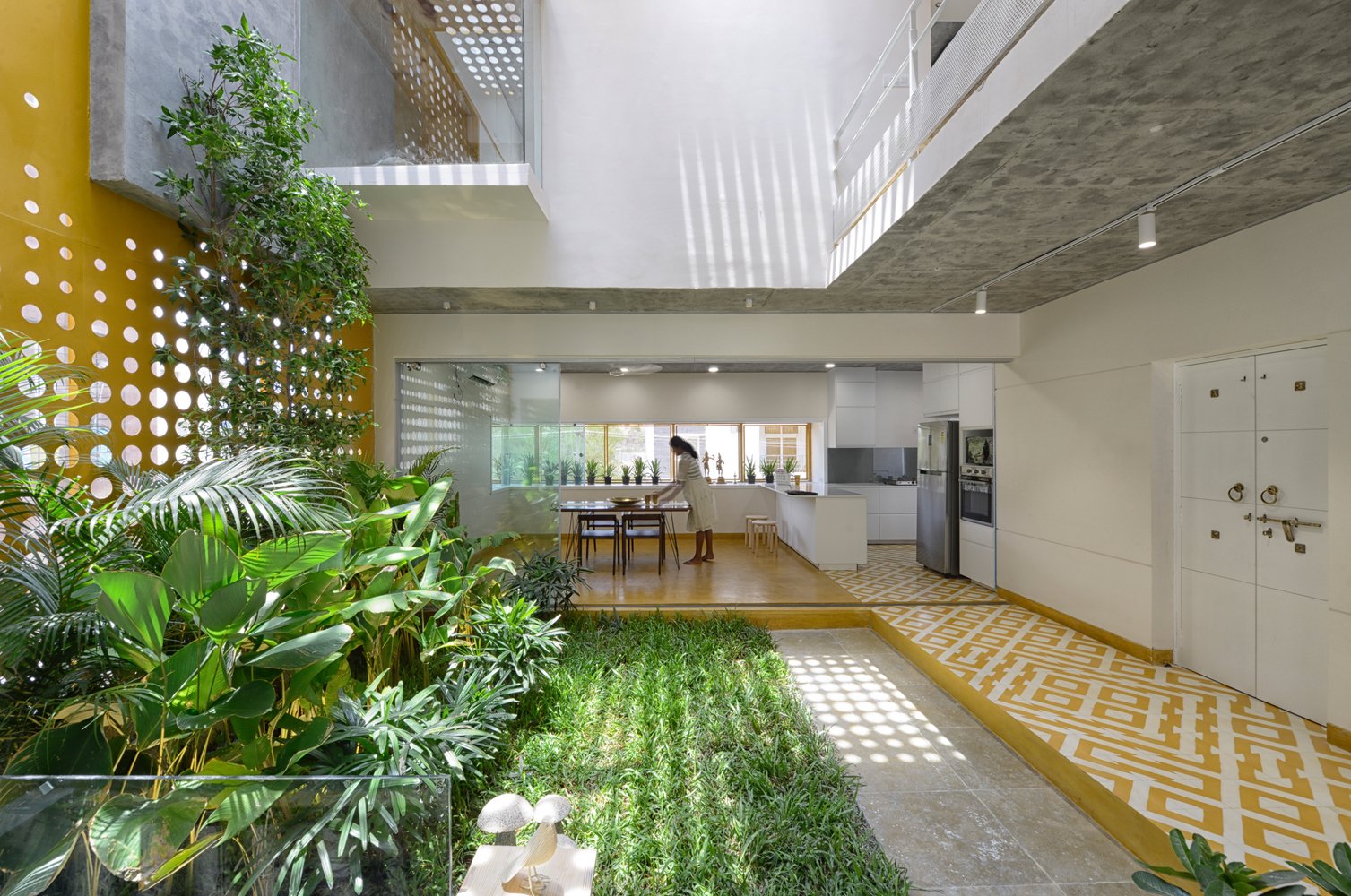Biophilia: Bringing Nature into Interior Design
September 01, 2020
Written by Eric Baldwin
Interior design begins with human experience. Considering the physical, mental, and emotional needs of people, interior designers use human-centred approaches to address how we live today. Creating novel approaches to promoting health, safety, and welfare, contemporary interiors are increasingly inspired by biophilia as a holistic approach to design.
By definition, interior design encompasses diverse aspects of our environment. The discipline extends to building materials and finishes; casework, furniture, furnishings, and equipment; lighting; acoustics; wayfinding; ergonomics and anthropometrics; and human environmental behavior. Centering on experience, biophilia influences the moment-to-moment physical and sensory elements found within interiors. It impacts our emotions, health, and overall feeling. But what is biophilia, and how does it connect to design?
Biophilia is the idea that humans possess an innate tendency to seek connections with nature. The term translates to ‘the love of living things’ in ancient Greek (philia = the love of / inclination towards), and was used by German-born American psychoanalyst Erich Fromm in The Anatomy of Human Destructiveness (1973), which described biophilia as “the passionate love of life and of all that is alive.” The term was later used by American biologist Edward O. Wilson in his work Biophilia (1984), which proposed that the tendency of humans to focus on and to affiliate with nature and other life-forms has, in part, a genetic basis.
Wilson also introduced a conservation ethic based on multiple dimensions of the innate relationship humans share with nature. His notion of environmental stewardship drew on various concepts, including the practical dependence of humans on nature; the satisfaction derived from direct interaction with nature; the physical appeal of nature, evident in its role as a source of inspiration and peace; and the human attachment to nature in the form of emotional connections to landscapes and spaces. Biophilia's core principle is to connect humans with nature, and as a result, improve well-being.
In design, we bring characteristics of the natural world into built spaces, such as water, greenery, and natural light, or elements like wood and stone. Encouraging the use of natural systems and processes in design allows for exposure to nature, and in turn, these design approaches improve health and wellbeing. There are a number of possible benefits, including reduced heart rate variability and pulse rates, decreased blood pressure, and increased activity in our nervous systems, to name a few.
Over time, our connections to the natural world diverged in parallel with technological developments. Advances in the 19th and 20th centuries fundamentally changed how people interact with nature. Sheltered from the elements, we spent more and more time indoors. Today, the majority of people spend almost 80-90% of their time indoors, moving between their homes and workplaces. As interior designers embrace biophilia, they make spaces that better reduce stress while improving cognitive function and creativity. Utilizing biophilic approaches in interiors, they can use botanical shapes and forms, as well as create distinct visual relationships to nature. In doing so, we understand that biophilia consists of different natural layers that echo interior design.
Explored through Terrapin’s 14 Patterns of Biophilic Design, we can see how these layers address universal issues of human health and well-being. They include nature in the space, natural analogs, and more broadly, the nature of space itself. The patterns range from visual connections, non-rhythmic sensory stimuli, temperature and airflow, to dynamic lighting and the presence of water. They can be understood in terms of direct experience (light, air, weather), indirect experience (natural materials, evoking nature) and the experience of space and place (prospect and refuge, mystery and risk).
Establishing multi-sensory experiences, we can design interiors that resonate across ages and demographics. These rooms and spaces connect us to nature as a proven way to inspire us, boost our productivity, and create greater well-being. Beyond these benefits, by reducing stress and enhancing creativity, we can also expedite healing. In our increasingly urbanized cities, biophilia advocates a more humanistic approach to design. The result is biophilic interiors that celebrate how we live, work and learn with nature.
Blogger Comments:
The biophilic design was introduced long ago; however, it only became a trend recently through various projects. Throughout time, people were only thought biophilia was bringing greenery to indoor space or integrating it with architectural design. However, designers created a multi-sensory experience to let the user establish a bond with nature.
Biophilic design and sustainable design have always been the most interesting part of interior design for me. I have often tried to bring biophilia and sustainability into my design projects and integrate these two with technology. With the advancement of technology, it is possible to eventually make biophilia and sustainability come true as they were originally conducted as concepts.






